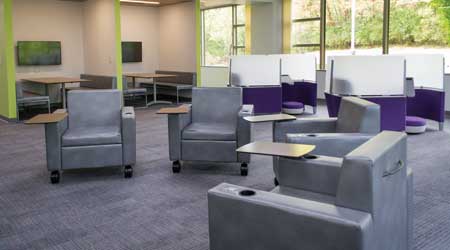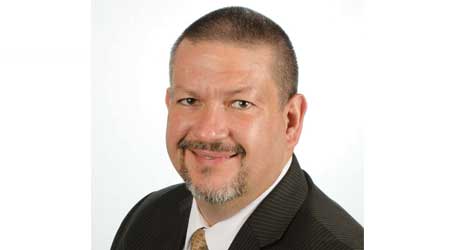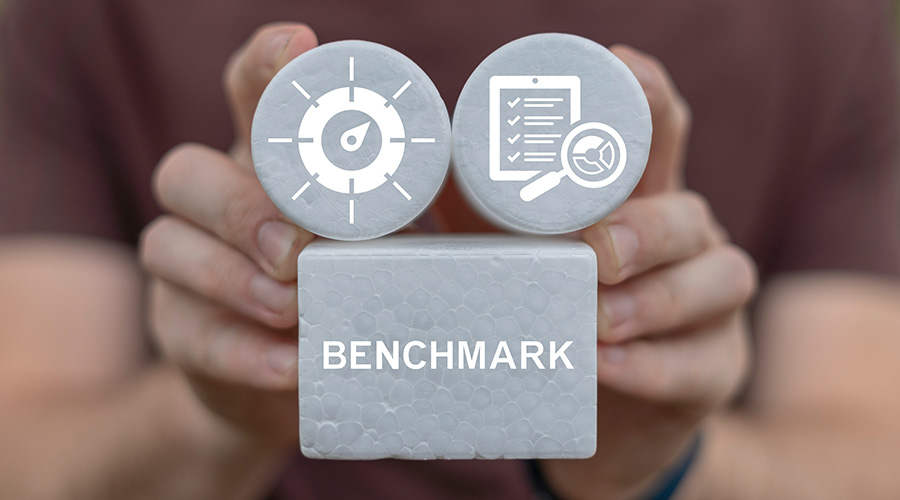 Huddle space, and lots of it, is an important facet of ensuring employees are happy with open office design. American Modern Insurance Group
Huddle space, and lots of it, is an important facet of ensuring employees are happy with open office design. American Modern Insurance Group Examination of Corporate Culture Leads to Open Office Space
At American Modern Insurance Group, Tony Spence led an initiative to aid the transfer of knowledge across disparate departments. The solution? Open office space.
At American Modern Insurance Group, open office is seen as an investment in the company’s employees, says Tony Spence, head of corporate facilities. Helping them understand that leads to a more engaged associate, says Spence. “We get an associate who wants to come to work.”
American Modern, headquartered in a 500,000-square-foot facility near Cincinnati, is a subsidiary of Munich Re, and Spence and Chris Walinski, building operations manager, Munich Re, talk frequently to share information about facility management strategies.
For Spence, getting to the open office design was part of a holistic corporate examination of culture. “Back in 2014, our design team did a deep dive into what the organization culturally desired to be and where we were going as a company,” says Spence. “We analyzed the work we were asking people to do and how they were going to do it.” The goal, says Spence, became to break down silos so it would be easier to transfer information across all functions of the company. The workplace strategy included an open office design.
 Tony Spence, head of corporate facilities, American Modern Insurance Group
Tony Spence, head of corporate facilities, American Modern Insurance GroupAlong the way, Spence has learned several lessons about how to make open office design successful. One project in particular was a bit nerve-wracking. The project, a customer service space for more than 160 employees, involved lowering walls and bringing people in tighter. “That was definitely something new to our associates here,” he says. “So we had to prepare them to make the space successful.” It meant being very careful about how people were oriented at their workspaces to ensure the acoustics weren’t objectionable. They implemented a soundmasking system to help cover some of the voice noise, as well. It has been successful.
“We made sure that those who would be on the phones would have the chance to see their cubicles and the setup to give us feedback,” he says. “It’s definitely worked. We’ve had no noise complaints.”
Another important lesson learned is to understand how to make sure occupants continue to be satisfied with the space. Spence uses information from traditional engagement surveys on a regular basis. But more than that, like Walinski, he strives to listen to occupant needs and be responsive. “The new will wear off, so the space has to outlive the new finishes and furniture,” he says. “Many people will tolerate things in new space they otherwise wouldn’t. So the space has to be functional enough to move beyond the glamour of new.”
Spence says the best way to do that is to design flexibility into the space and to maintain constant contact with occupants about how they use it and what they need. “We’re moving away from private offices,” he says. “But we’re building our huddle spaces the same size the offices were.” The idea is that if, down the road, there is a need for private office space, they have ready-made rooms for those needs.
Overall, Spence says the biggest lesson is just to keep constantly in mind that the space exists solely to help employees do their work. “We’re always thinking about how space will support collaboration, would be engaging, would bring in talent, and would support knowledge transfer,” he says.
Related Topics:



















